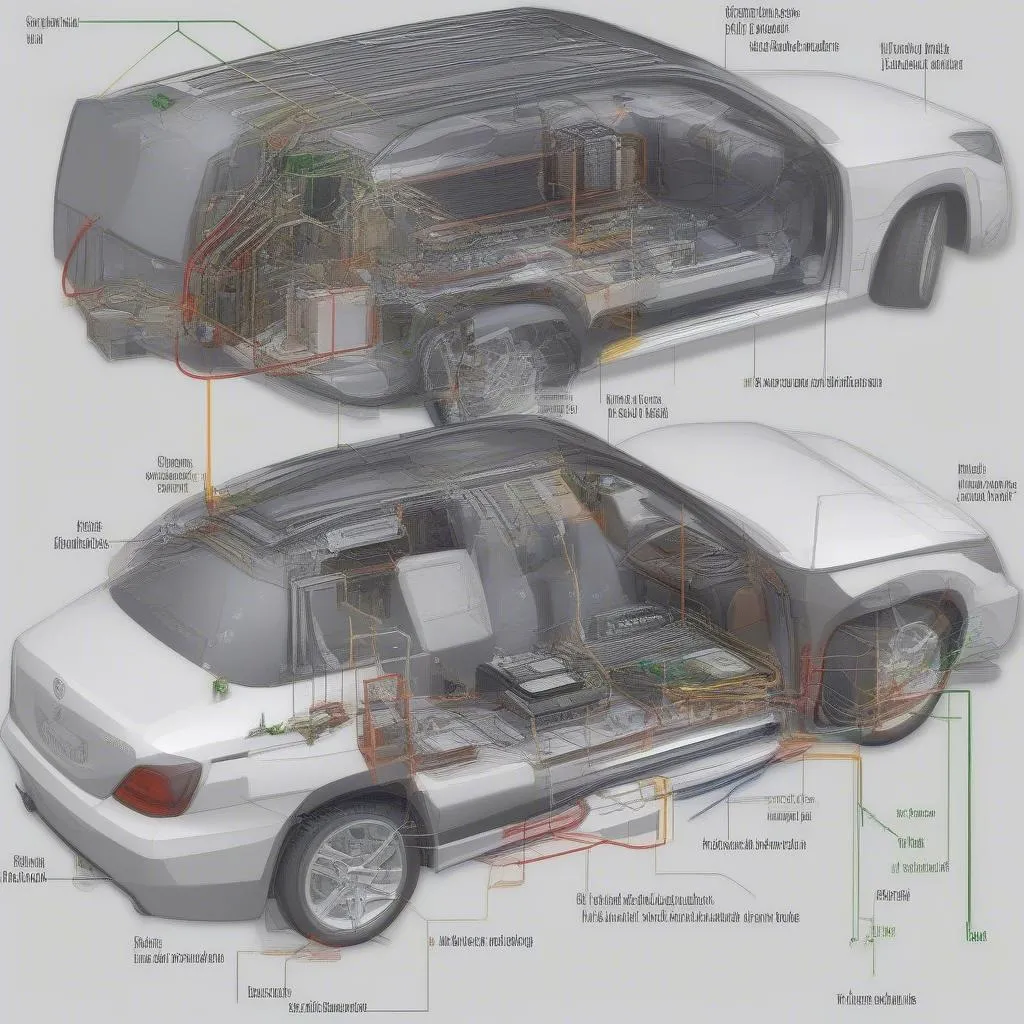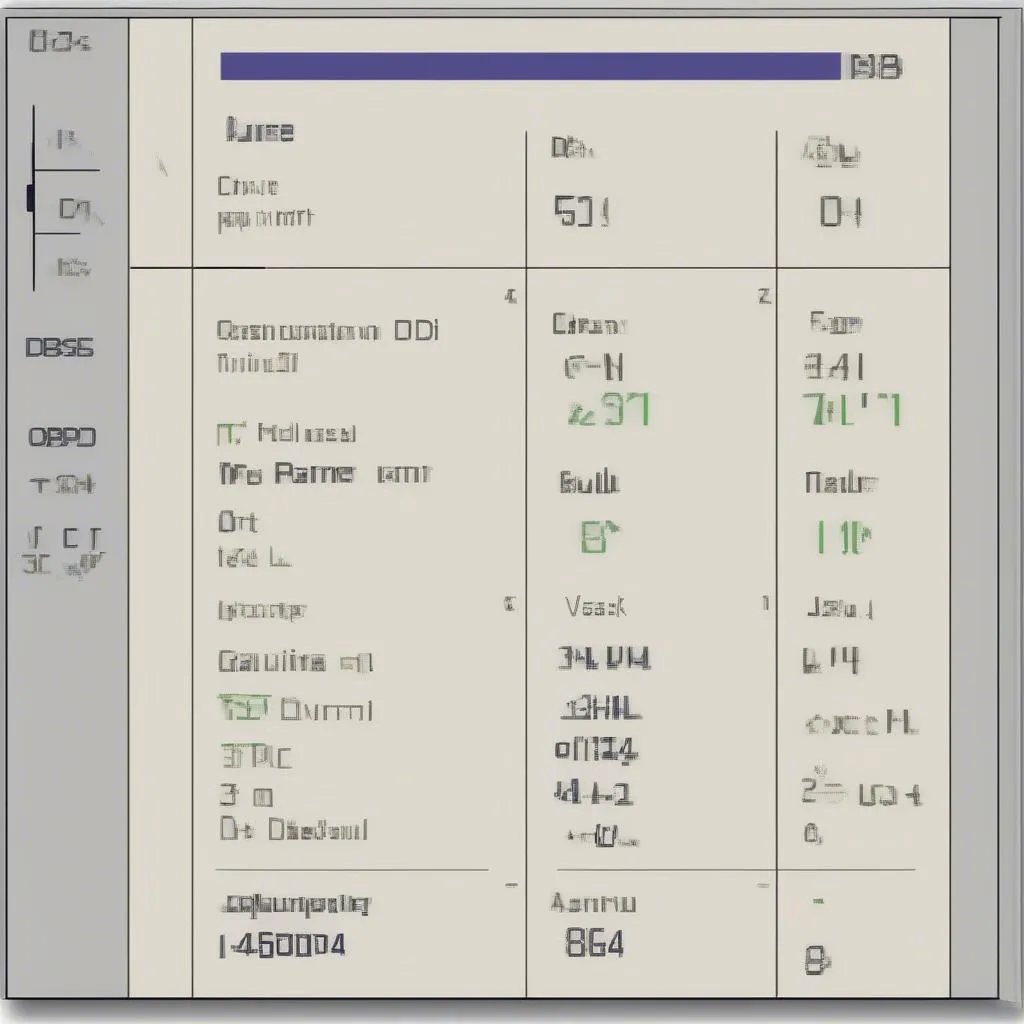Have you ever wondered how your car’s computer calculates fuel consumption, and how accurate those readings are? The answer lies in the fascinating world of OBD (On-Board Diagnostics) and CAN (Controller Area Network) data, which are essential for understanding how your car’s fuel system works. In this article, we’ll dive deep into the gasoline volume OBD calculator and how it utilizes CAN data to determine your fuel consumption.
What Is the Gasoline Volume OBD Calculator and Why Is it Important?
The gasoline volume OBD calculator is a software tool used to estimate the amount of fuel consumed by a vehicle based on data collected from the car’s onboard computer system. This calculator utilizes CAN data, which is a standardized communication protocol used by various electronic control units (ECUs) in your car. Think of it as a digital language that allows different parts of your car to talk to each other.
Imagine you’re driving down a highway in your BMW 3 Series, enjoying the smooth engine purr. At the same time, your car’s computer is constantly monitoring various parameters like fuel pressure, engine load, and fuel injector pulse width, all thanks to the CAN network. These data points are then fed into the gasoline volume OBD calculator, allowing it to calculate the fuel consumption in real-time.
Understanding the Importance of CAN Data:
CAN data is crucial for the gasoline volume OBD calculator to function accurately. This data represents a snapshot of your vehicle’s fuel consumption at a specific point in time. For example, let’s take a look at some of the essential parameters that the calculator relies on:
- Fuel rail pressure: This indicates how much fuel is being supplied to the engine.
- Fuel injector pulse width: This measure determines the amount of fuel injected during each combustion cycle.
- Engine speed: The faster the engine spins, the more fuel it typically needs.
- Throttle position: This data helps estimate how much fuel is required based on your driving style.
How Does the Gasoline Volume OBD Calculator Work?
Now, let’s dive into the heart of the matter: How does the gasoline volume OBD calculator actually calculate fuel consumption? It’s a fascinating process that combines data from the CAN bus with complex algorithms. Here’s a simplified explanation:
- Data Acquisition: The calculator retrieves data from the car’s CAN bus, including fuel rail pressure, engine speed, throttle position, and other relevant parameters.
- Fuel Consumption Calculation: Based on the acquired data, the calculator uses a pre-programmed formula to calculate the amount of fuel injected into the engine during a specific time period.
- Displaying the Results: The calculated fuel consumption is displayed on the vehicle’s dashboard or can be accessed through a diagnostics tool like a Dealer Scanner for European Cars.
Common Questions Regarding Gasoline Volume OBD Calculator
Let’s address some of the most frequent questions related to the gasoline volume OBD calculator:
Q: Is the fuel consumption displayed by the gasoline volume OBD calculator accurate?
A: While the calculator is generally accurate, it’s important to note that it’s an estimation based on data collected from the CAN network. The actual fuel consumption may slightly vary depending on factors such as driving conditions, engine wear, and environmental factors.
Q: Can I use the gasoline volume OBD calculator to improve my fuel efficiency?
A: Absolutely! By understanding the data displayed by the calculator, you can make informed decisions about your driving habits and potentially improve your fuel efficiency. For example, by monitoring fuel consumption, you can identify instances of excessive acceleration or idling that impact fuel economy.
Q: How can I access the gasoline volume OBD calculator data?
A: Most modern vehicles come equipped with an OBD-II port, which allows you to connect a diagnostics tool like a Dealer Scanner for European Cars. These scanners can provide access to a wealth of data, including fuel consumption information.
Q: What are the potential limitations of the gasoline volume OBD calculator?
A: The accuracy of the gasoline volume OBD calculator can be affected by various factors such as:
- Engine wear: Worn-out engine components can lead to inaccurate fuel consumption readings.
- Environmental factors: Weather conditions like extreme temperatures can affect fuel consumption.
- Driving style: Aggressive driving can lead to higher fuel consumption.
Conclusion:
Understanding the gasoline volume OBD calculator and its utilization of CAN data is essential for drivers who want to optimize their fuel efficiency and monitor their vehicle’s performance. With the right tools and knowledge, you can gain insights into your car’s fuel consumption and make informed decisions to optimize your driving habits.
For professional diagnostics and assistance, contact our team of experts at Whatsapp: +84767531508. We offer 24/7 support for all your automotive needs, including Dealer Scanner for European Cars setup and troubleshooting.
 Controller Area Network
Controller Area Network
 Gasoline Volume OBD Calculator
Gasoline Volume OBD Calculator
Want to learn more about advanced automotive diagnostics? Check out our articles on:
- Understanding OBD-II Codes: Troubleshooting Your Car’s Issues
- Dealer Scanners for European Cars: Unlock Your Car’s Hidden Data
- The Importance of Regular Automotive Maintenance for Fuel Efficiency